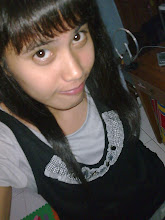Jathilan is a traditional folk art form of dance group and performed by dancers numbered 14 men. Dancer who plays a woman called wewe. Jathilan which is a dance group consists of 2 Barongan, 1 penthul, 1 bejer, 1 wewe, and 1 gendruwo and 6 soldiers. Jathilan show was held in the open wide enough for the movement of the dancers are very dynamic. One of the highlights of this dance is the dancer who "ndadi / trance / in trance". Currently Jathilan art is still alive and well developed in all districts in Kulonprogo.
Jathilan known as one of the oldest dance forms in Java.Art is also often called by the name braid horse or horse.Jathilan dance is also a stage drama that brought six men in pairs that use a similar uniform. In addition to this dance, also featuring dancers use masks. With the characters are diverse, there gondoruwo (Satan) or Barongan (lion). They arise when the soldiers went to war with the aim to disrupt.
No one knows and defines when this dance was originally there. But certainly, Jathilan developed in some regions such as East Java, Central Java and Yogyakarta. Each region displays the version of each. Word problems, they usually play the same identical displays, such as Bannerman, Ario Penangsang picture of life as well as soldiers in the kingdom of Majapahit.
This dance is its flexibility, can be displayed anywhere, at weddings, circumcision or at a party or festival of folk art.According to a lecturer Department of Dance School of Performing Arts Indonesia Arts Institute (ISI) in Yogyakarta, Gandung Sudjatmiko, this art comes from the rabble.
This can be seen from the appearance of simplicity clothing used by the dancers. They wore knee-length trousers, batik cloth subordinates, shirts or sweatshirts, setagen, buckled belts, shoulder sling (enthusiastic), waist scarf (sampur) and a cloth headband (udheng) and ear ornaments (Sumping). The dancers dressed up and wearing flashy sunglasses. Certainly very different from the clothing empire that uses a magnifying self-contained and sparkling clothes. Dance that was exhibited also tend repetitive and monotonous with a simple musical compositions, but with passion.
Identical to TranceJathilan is a dance drama with scenes of battle fellow horsemen with swords weapons, which gives priority to the theme of dance battle gallant soldier on the battlefield on horseback and armed with swords. However, the more people know him as a dance that is identical to that contained elements of magical dance and trance.In the original version, the dancers will perform scenes Jathilan dances continuously without stopping, turning in circles until one of them have what is called trance (condition is unconscious but still dancing).
The audience will be strained when they start grabbing whatever is in front. Even the broken glass of the dancer who could eat no pain at all much less bloody. They chew like to enjoy food and delicious snacks. For some viewers, it's trance scene was engrossing spectacle. How do humans eat glass, eating grass, coconut skin peeling with the teeth and other stunts.
Over time, the art of dance Jathilan now can be varied by various other music. Call it the new model Jathilan. They had penetrated into the region and modern feel of the music mengolaborasikan today that does not seem cheesy, such as jazz, pop or mixed Sari
No one knows and defines when this dance was originally there. But certainly, Jathilan developed in some regions such as East Java, Central Java and Yogyakarta. Each region displays the version of each. Word problems, they usually play the same identical displays, such as Bannerman, Ario Penangsang picture of life as well as soldiers in the kingdom of Majapahit.
This dance is its flexibility, can be displayed anywhere, at weddings, circumcision or at a party or festival of folk art.According to a lecturer Department of Dance School of Performing Arts Indonesia Arts Institute (ISI) in Yogyakarta, Gandung Sudjatmiko, this art comes from the rabble.
This can be seen from the appearance of simplicity clothing used by the dancers. They wore knee-length trousers, batik cloth subordinates, shirts or sweatshirts, setagen, buckled belts, shoulder sling (enthusiastic), waist scarf (sampur) and a cloth headband (udheng) and ear ornaments (Sumping). The dancers dressed up and wearing flashy sunglasses. Certainly very different from the clothing empire that uses a magnifying self-contained and sparkling clothes. Dance that was exhibited also tend repetitive and monotonous with a simple musical compositions, but with passion.
Identical to TranceJathilan is a dance drama with scenes of battle fellow horsemen with swords weapons, which gives priority to the theme of dance battle gallant soldier on the battlefield on horseback and armed with swords. However, the more people know him as a dance that is identical to that contained elements of magical dance and trance.In the original version, the dancers will perform scenes Jathilan dances continuously without stopping, turning in circles until one of them have what is called trance (condition is unconscious but still dancing).
The audience will be strained when they start grabbing whatever is in front. Even the broken glass of the dancer who could eat no pain at all much less bloody. They chew like to enjoy food and delicious snacks. For some viewers, it's trance scene was engrossing spectacle. How do humans eat glass, eating grass, coconut skin peeling with the teeth and other stunts.
Over time, the art of dance Jathilan now can be varied by various other music. Call it the new model Jathilan. They had penetrated into the region and modern feel of the music mengolaborasikan today that does not seem cheesy, such as jazz, pop or mixed Sari








Hi, Geby thank's for the article about jathilan. It's really help me to explain about it to my college in US. :)
ReplyDelete